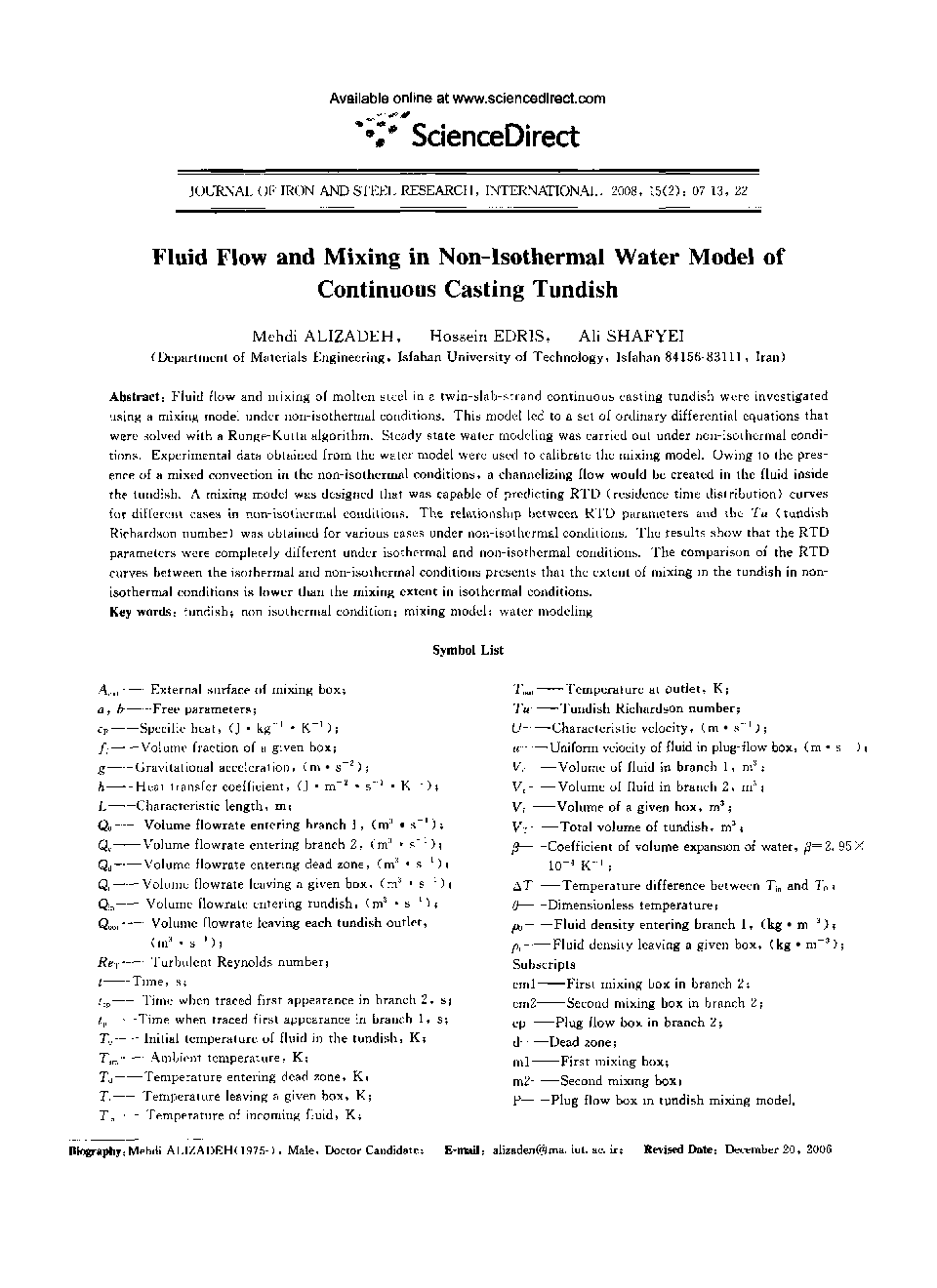| Article ID | Journal | Published Year | Pages | File Type |
|---|---|---|---|---|
| 1629923 | Journal of Iron and Steel Research, International | 2008 | 8 Pages |
Abstract
Fluid flow and mixing of molten steel in a twin-slab-strand continuous casting tundish were investigated using a mixing model under non-isothermal conditions. This model led to a set of ordinary differential equations that were solved with a Runge-Kutta algorithm. Steady state water modeling was carried out under non-isothermal conditions. Experimental data obtained from the water model were used to calibrate the mixing model. Owing to the presence of a mixed convection in the non-isothermal conditions, a channelizing flow would be created in the fluid inside the tundish. A mixing model was designed that was capable of predicting RTD (residence time distribution) curves for different cases in non-isothermal conditions. The relationship between RTD parameters and the Tu (tundish Richardson number) was obtained for various cases under non-isothermal conditions. The results show that the RTD parameters were completely different under isothermal and non-isothermal conditions. The comparison of the RTD curves between the isothermal and non-isothermal conditions presents that the extent of mixing in the tundish in nonisothermal conditions is lower than the mixing extent in isothermal conditions.
Related Topics
Physical Sciences and Engineering
Materials Science
Metals and Alloys
Authors
Mehdi ALIZADEH, Hossein EDRIS, Ali SHAFYEI,
